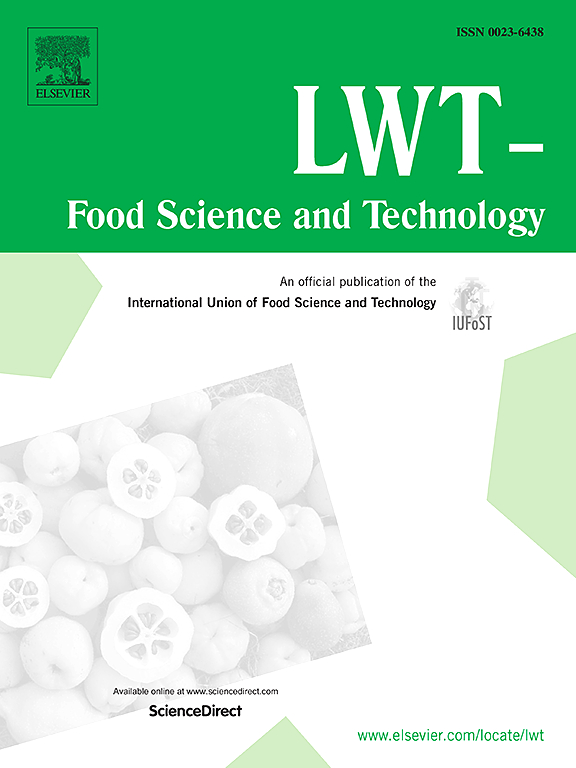魔芋葡甘露聚糖对不同强度面筋理化及组成特性的影响
IF 6
1区 农林科学
Q1 FOOD SCIENCE & TECHNOLOGY
引用次数: 0
摘要
魔芋葡甘露聚糖(KGM)是一种非离子型水胶体膳食纤维,广泛应用于食品和制药行业。在这项研究中,我们旨在了解KGM对面团质地特性、面筋分子链形态、共价和非共价相互作用、面筋分子量以及弱、中、强面筋样品不同亚基分布的影响。在0.1 g g−1 KGM的作用下,中筋蛋白和强筋蛋白中的二硫键和氢键被破坏,导致谷蛋白与麦胶蛋白亚基(α-麦胶蛋白和γ-麦胶蛋白)之间的交联断裂,导致谷蛋白分子链高度严重下降。此外,0.1 gg−1 KGM在中间面筋中引起的氢键断裂是面筋聚集的不利因素。这些变化导致中筋和强筋面团硬度降低。0.1 gg−1 KGM虽然破坏了弱面筋中的二硫键,但形成了更多的氢键,增加了面筋分子链的高度,改善了面筋的聚集。这些发现可以作为创造更有创意的转基因食品的基础。本文章由计算机程序翻译,如有差异,请以英文原文为准。
Impacts of konjac glucomannan on the physicochemical and compositional properties of gluten with different strengths
Konjac glucomannan (KGM) is a kind of non-ionic hydrocolloid dietary fiber widely used in the food and pharmaceutical industries. In this study, we aimed to understand the impacts of KGM on dough textural properties, gluten molecular chain morphology, covalent and non-covalent interactions, gluten molecular weight, and different subunits distributions of weak, middle, and strong gluten samples. After treatment with 0.1 g g−1 KGM, disulfide and hydrogen bonds were destroyed in middle and strong gluten, which resulted in the fracture of the crosslink between glutenin and gliadin subunits (α-gliadin and γ-gliadin) and in turn caused a severe decline in gluten molecular chain height. Besides, the breaking of hydrogen bonds caused by 0.1 g g−1 KGM in middle gluten was an adverse factor for gluten aggregation. These changes led to a decrease in dough hardness for middle and strong gluten. Although the disulfide bonds were destroyed in weak gluten when 0.1 g g−1 KGM was treated, it formed more hydrogen bonds and then increased the gluten molecular chain height and improved gluten aggregation. These findings could serve as a foundation for creating more inventive KGM-based foods.
求助全文
通过发布文献求助,成功后即可免费获取论文全文。
去求助
来源期刊

LWT - Food Science and Technology
工程技术-食品科技
CiteScore
11.80
自引率
6.70%
发文量
1724
审稿时长
65 days
期刊介绍:
LWT - Food Science and Technology is an international journal that publishes innovative papers in the fields of food chemistry, biochemistry, microbiology, technology and nutrition. The work described should be innovative either in the approach or in the methods used. The significance of the results either for the science community or for the food industry must also be specified. Contributions written in English are welcomed in the form of review articles, short reviews, research papers, and research notes. Papers featuring animal trials and cell cultures are outside the scope of the journal and will not be considered for publication.
 求助内容:
求助内容: 应助结果提醒方式:
应助结果提醒方式:


